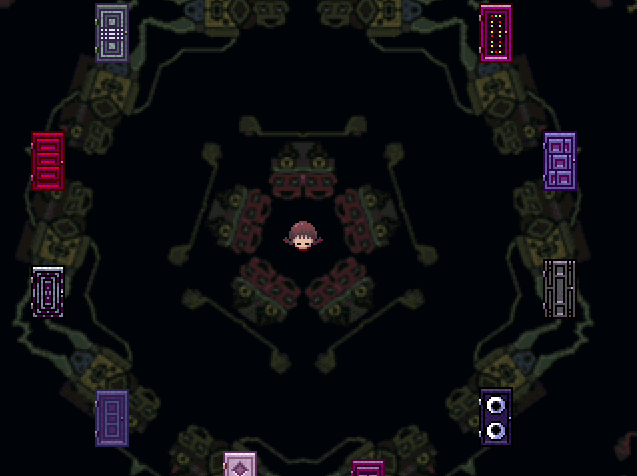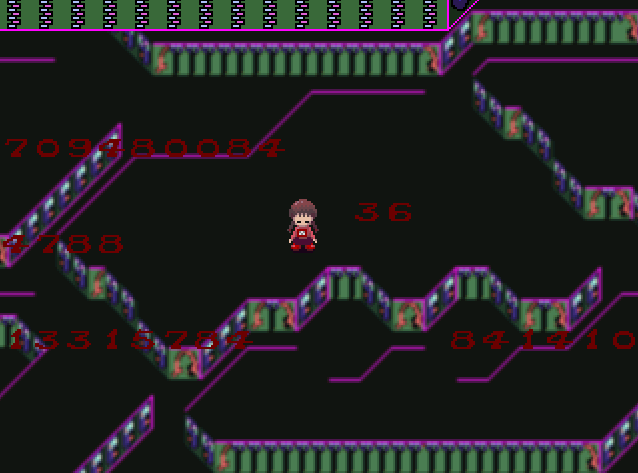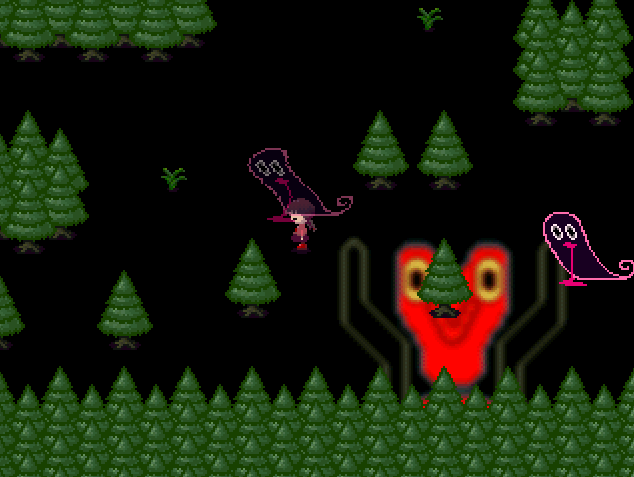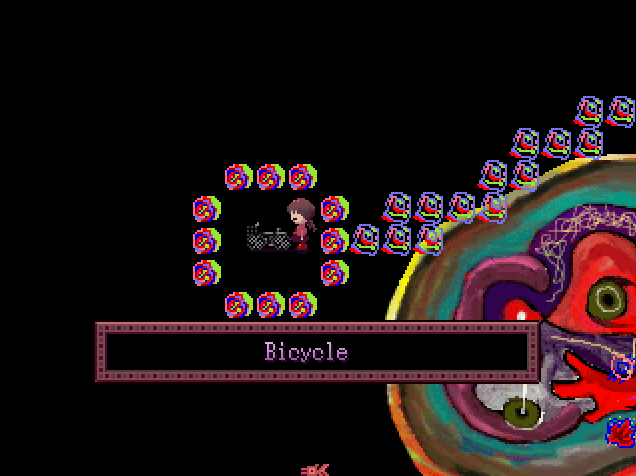Critical Play: Walking Simulators (Yume Nikki)
Game Overview
- Name: Yume Nikki
- Developer: kikiyama
- Publisher: PLAYISM
- Platform: PC
- Target Audience: Fans of indie games, surreal horror, and psychological exploration
Introduction
The walking simulator “Yume Nikki” departs from conventional role-playing games by removing speech and conventional storytelling to fully immerse players into Madotsuki’s (the character) unsettling dreamscapes. As players explore a variety of bizarre settings, they gather “effects” that profoundly change the appearance, movement, and perceptions. These modifications not only affect gameplay but also further explore dream scapes from a psychological perspective, providing a distinctive and captivating interactive experience. “Yume Nikki” stands out from other games in the category by fusing user involvement and aesthetics with gameplay mechanics.
Central Argument: Walking as a Mechanism for Narrative Unfolding
In “Yume Nikki,” walking takes on an artistic role beyond its use as a mode of transportation. Parts of a wordless story are revealed as Madotsuki makes her way through a number of dreamscapes, each with odd and unsettling imagery. This gaming feature transforms simple movement into an in-depth exploration of psychological and emotional territory. Each journey through the dreamscapes becomes a unique story experience because it modifies how movement is felt in the game and encourages thoughtful contemplation and personal interpretation of the abstract elements.
Learning
Mechanics: Users traverse a 2D l landscape and engage with various things that change Madotsuki, the main character, as well as the surroundings. The “Effects” are essential mechanical components that change how players interact and see the game; they also act as keys to open new sections and change how the game plays.
Dynamics: As players engage with the “effect” mechanics or explore new areas, the dynamics change. For example, the “Severed Head” effect (shown below through my gameplay) is a noteworthy dynamic that modifies Madotsuki’s appearance and movement. Personalized experiences and interactions inside the game world are created by players as a result of these and other effects that drive exploration and discovery.
Aesthetics: Fantasy, expression, and discovery are all major components of the game’s aesthetics. A feeling of unpredictability, loneliness, and dread is also evoked by the stark visual style and atmosphere. The minimalist yet eerie dreamscapes of the game heighten these sensations (I got goosebumps playing this game at night). With each player’s interactions and interpretations, this combination creates a deeply emotional experience that is unique and expressive. The game is also appealing because of its submissive nature, allowing players an immersive escape into the game’s world.
“Yume Nikki” demonstrates a sophisticated understanding of player psychology, emphasizing how minimalism and isolation can affect emotional engagement. By limiting direct interaction and narrative clarity, it invites players on a deeply personal journey through its dream realms, encouraging reflection on their experiences. Although effective, this approach may alienate players seeking more traditional gameplay and narrative structures. Potential extensions could include subtly integrated narrative threads or dynamic environmental changes to enhance engagement while preserving the game’s mysterious allure.
Comparisons
“Yume Nikki” distinguishes itself from narrative-driven walking simulators such as “Firewatch” or “Dear Esther” by prioritizing introspection and learning above a predetermined storyline and plot progression. It offers a free-form experience that deviates from traditional story arcs and greatly depends on player agency and subjective interpretation. This design style moves the emphasis from linear to exploratory and introspective gameplay, challenging conventional gameplay structures by giving aesthetics precedence over mechanics. Because of this, “Yume Nikki” is able to reinvent its genre, going beyond what is typically expected of narrative-driven games and adopting a player-focused strategy in which the story and gameplay both develop by individual interaction and interpretation.
Evidence and Analysis
In the game “Yume Nikki,” every “Effect” that Madotsuki gathers has a substantial impact on gameplay. In the “severed head” example referenced earlier, her visual presentation is altered, and her movement speed is significantly impacted which horrifyingly turns her appearance into a dripping, bloodied head. The way the dreamscapes are perceived and interacted with by the player is drastically changed, highlighting the surreal horror aspects of the game. These changes produce a rich, interactive narrative that dynamically changes the mood and tone of the game, drawing players in with both visual and emotional storytelling. These transformations are combined with the wildly different environments, which range from neon mazes with floating numbers to dark forests with eerie figures (shown in my gameplay below).

A screenshot of me with the “Severed Head” effect equipped in the main hall.

A screenshot of me exploring a neon maze after entering one of the doors from the main hall.

A screenshot of me wandering in a dark forest infested with what appears to be dark spirits.

A screenshot of me acquiring the bicycle “effect” which allows for faster transportation.
Conclusion
“Yume Nikki” is a prime example of how the MDA framework can be applied to produce an emotionally charged and immersive experience. The game redefines walking simulators by emphasizing minimal gameplay aspects to elicit deep connections. It shows how basic movements like walking may explore complex subjects like loneliness, fear, and the subconscious. It continues to be an essential component of independent game production, influencing and frightening new player generations while changing how people view genre classification and game design. This game emphasizes the value of aesthetics in game design while also increasing player engagement and expanding the categorization and experience of games.




